Architectural promenades : discover Le Corbusier's architecture while travelling
A cultural journey through France : Le Corbusier architectural promenade
COVID-19 lets us all look into the future and dream about the experiences we will have together 'afterwards'. The architectural promenade Le Corbusier can be a silencer of longing – because discovering architecture while travelling can be an incentive for the next journey.
According to the motto 'dream now, travel later', we long for the new, the charm of the unknown and the desire for unforgettable moments in the near and the sole idea of the far is like a companion to us. For Le Corbusier too, the unknown was a stimulus and incentive to develop and refine his timeless architecture and paintings, as well as the Architectural Polychromy.
In May 2019, after three years of work, the Association des Sites Le Corbusier (ASLC) was rewarded by the Secretariat of the Enlarged Partial Agreement on Cultural Routes of the Council of Europe. The "Le Corbusier Destinations: architectural promenades" was certified as a Cultural Route of the Council of Europe.
This great cultural project is a complement to the inscription of the 17 worldwide Le Corbusier buildings on the UNESCO World Heritage List. The "Destinations Le Corbusier: promenades architecturales" brings together buildings with UNESCO World Heritage registration and timeless Le Corbusier buildings.
The aim is to promote "all the works built by Le Corbusier throughout Europe (initially some thirty sites in three countries – France, Germany and Switzerland – but also beyond Europe, in Argentina and Japan for example) and to continue the momentum created between the members and international partners "1. The Association of Le Corbusier Sites proposes a cultural route comprising 21 cities, 6 countries and some thirty architectural sites built by Le Corbusier. This accredited cultural route is aimed at a broad public – families, individuals, groups, academics as well as schools – and encourages travellers to discover all the work built by Le Corbusier and his importance in Europe and beyond.
A cultural journey through France: Le Corbusier architectural promenade
In case of doing the journey by car at a stretch, one would be on the road for about 18 hours. Anyway, individual travel by car is very much in vogue – so why not follow in Le Corbusier's footsteps and discover beautiful France.
Cité Frugès, Pessac
In the south-west of France, near to Bordeaux, we find the colourful Cité Frugès – Quartiers Modernes Frugès, which combines art and social progress. There, Le Corbusier has used a soft green to bring nature into the city. The construction of the Cité Frugès, carried out between 1924 and 1926 by the architects Pierre Jeanneret and Le Corbusier, was a revolution in social housing at the time. This amazing project is due to Henry Frugès, a Bordeaux industrialist and lover of modern architecture. His inspiration was of social nature: he wanted to make housing available to everyone, regardless of their financial situation. In 1929, fifty houses were built. The architectural style was completely different from all others at that time. The Cité Frugès is inscribed on the UNESCO World Heritage List.
About Pessac and his own architectural colours, Le Corbusier wrote in 1925: "We also used a completely new concept of polychromy, as we focused on a purely architectural goal: to shape space through the physical quality of colour – to highlight some volumes and make others stand out. In short, we compose with colour in the same way we composed with form. In this way, architecture is transformed into urbanism"
Site Le Corbusier, Firminy
Firminy is a town in the Loire department, in the Rhône-Alpes region. Since 1995, the town has been part of the Saint-Étienne Métropole. The architectural and urbanistic ensemble of the "Centre of Recreation of the Body and the Mind" is symbolically located at the junction between the old town of Firminy and the Firminy-Vert district.
Of the many buildings by Le Corbusier in Firminy-Vert, only the Maison de la Culture is among the architectural works listed by the UNESCO as World Heritage. The building is 112 metres long. Le Corbusier applied the importance of architectural colour in Firminy too. The Unité in Firminy also has the characteristic use of colour for the Brise-Soleil. And a nursery with striking colours and window elements. In the Firminy Church, Le Corbusier, as an artist as well as an architect, has expressed an extraordinary sensitivity for the interplay of colour and light in sacred buildings.
Convent and Sanctuary along Le Corbusier's architectural promenade in France
Couvent Saint-Marie de la Tourette, Eveux
The monastery of Sainte-Marie de La Tourette in Éveux, near Lyon, was designed and built between 1954 and 1960 by the famous architect Le Corbusier. The monastery building, which is today considered a central work of so-called Brutalism, was built for the Dominican Order.
It is a unique synthesis of the achievements of the modern movement, a combination of purist lines, brutalist surfaces and extraordinary constructive solutions. The building is of austere beauty and was built using the Modulor-principles. It was built to be a self-contained world for a community of quiet monks, the idea being to reflect the unique and specific lifestyle of the monks.
Surrounded by woods and meadows, the monastery of La Tourette is located on a sloping hillside that opens to the valley. The building had been converted into an educational institution at the end of the 1960s. Today, the individual cells – each of which has a room height of 226 cm and a width of 183 cm – can be rented for overnight stays by guests.
Since 2006, the La Tourette Monastery has been a listed building. Two years later, the monastery was nominated for inclusion in the UNESCO World Heritage List, along with 16 other works by Le Corbusier. In the summer of 2016, the Couvent Saint-Marie de la Tourette, together with 16 other buildings by Le Corbusier, was declared a World Heritage Site.
Chapelle Notre-Dame du Haut, Ronchamp
Like no other building of the 20th century, the pilgrimage church Notre-Dame du Haut in Ronchamp has moved the minds. The chapel "Notre-Dame de Ronchamp" stands like a white ark, with stained glass openings. The roof construction is made of raw concrete.
The hill "Notre-Dame du Haut", which rises above Ronchamp (Franche-Comté), is a place of both historical and spiritual importance. Le Corbusier built a chapel here in 1955. In the seventies, Jean Prouvé created a bell tower. Le Corbusier used light to differentiate subspaces. Attention is drawn to the high altar, which is bathed in white or coloured light.
After reconstruction in 1920, the chapel was damaged by artillery fire in 1944. In the spring of 1950, Le Corbusier – at the insistence of his friend Maurice Jardot – came to the hill after some internal resistance. The natural environment and history of this place deeply touched the architect. In the end, François Mathey and Lucien Ledeur succeeded in persuading the architect to participate in the reconstruction. The foundation stone for the new chapel was laid on the 4th of April 1954. On the 25th of June 1955, the inauguration took place and, since 2016, this "building icon" has been on the UNESCO World Heritage List.
Le Corbusier in Briey and Saint-Dié-des-Vosges
Usine Duval, Saint-Dié-des-Vosges
Saint-Dié-des-Vosges is in the picturesque mountains of the Vosges, near Alsace. Although a large part of it was destroyed during the Second World War, the impressive cathedral (beautiful modern stained glass), the cloister and a chapel have been preserved. Monsieur Duval was also involved in commissioning Le Corbusier's well-known but unrealised proposal for the reconstruction of the city.
The Claude-et-Duval hosiery factory, designed by Le Corbusier in 1947 and built between 1948 and 1951, with its breeze-brine and polychromy, is the architect's only industrial building and the first building to follow the Modulor principles (the Cité Radieuse in Marseille was inaugurated one year later, in 1952).
Le Corbusier took this opportunity to create a "green plant", a programme resulting from the city's standards and the Athens Charter. The ceilings are painted with coloured rectangles. The ceilings and woodwork are intensely coloured to reflect the robust character of concrete. The resulting material and colour contrast places this work in the line of the villas of the 1930s, which already ushered in the brutalism of the post-war years. This building also belongs to the series of the 17 listed UNESCO World Heritage Sites.
Housing Unit, Briey
Briey is located about 30 km from Metz, about 100 km from Nancy and about 50 km from Luxembourg City. In Briey-en-Forêt, Meurthe-et-Moselle, Le Corbusier is building one of five housing units which are part of a project by the architect Georges-Henri Pingusson and includes 100 houses and a school near the unit. All these projects were born out of the need to provide housing for a constantly growing population in an area of mineral, mining, coal and iron extraction and the industrialization that accompanied it. The Cité Radieuse of Briey is 110 meters long, 19 meters wide and 56 meters high and made of 339 apartments on 17 floors, which corresponds to a population of about 1,000 inhabitants.
The Cité Radieuse of Briey-en-Forêt is located on a wooded plateau, far from the city. In 1955 and after the Second World War, a sharp increase in population was expected in the steel basin. The housing unit of Briey comprises 339 apartments in 11 variants. Almost all of these apartments are semi-detached and connected by 6 "inner streets". The orientation was specified: both the east and west glass facades are provided with loggias.
Architectural promenades – Le Corbusier architecture in Paris
Rental building at Porte Molitor, Boulogne-Billancourt
This residential complex is located in Boulogne-Billancourt. It is the first residential building in the world with fully glazed facades. The building also embodies the principles of the Cité radieuse, in the heart of the metropolis, in the neighbourhood of parks and numerous sports facilities. Le Corbusier's Parisian studio apartment is located in the "Immeuble Molitor" and has been the scene of many transformations and architectural experiments over the decades. The architect also frequently changed the colour scheme of the walls and adapted them to the prevailing lighting conditions. However, even at this time, he was already intensively devoted to the study of architectural colour design. This building also belongs to the series of the 17 Le Corbusier listed UNESCO World Heritage Sites.
Maisons La Roche-Jeanneret, Paris
The Maisons La Roche-Jeanneret are in the sixteenth arrondissement of Paris, near the metro station "Jasmin". They are considered the first architectural expression of purism. Le Corbusier worked together with his cousin Pierre Jeanneret on this Parisian residence for the Swiss banker Raoul La Roche. The building consists of two white blocks connected to form an L-shaped floor plan. The first house was designed for Le Corbusier's brother (Albert Jeanneret) and the second for Raoul La Roche. Construction began in November 1923. Today, the Jeanneret villa houses the Fondation Le Corbusier offices and a library. Only the La Roche house is open to visitors. The La Roche and Jeanneret houses have been inscribed on the UNESCO World Heritage List in July 2016.
The interior decoration follows the style of Le Corbusier's block-coloured walls in shades of grey, blue and Sienna. After renovation, the Maison La Roche in Paris reopened its doors in 2009. The use of colour also participates in this new perception of space. Le Corbusier applies an Architectural Polychromy derived from purist theories. The colours used belong to the three domains – strong, dynamic and transitional – that determine the sequence of the "architectural walk".
Pavillon Suisse and Villa Savoye in France
Pavillon Suisse, Paris
The international student campus was built in 1922 as a 44-hectare park on the site of the former city wall and features numerous national pavilions. The Swiss Pavilion is now considered by many to be a museum but is primarily a student residence. The Pavillon Suisse was listed as a historical monument in 1986.
In 1924, Switzerland decided to build a pavilion on the CIUP (Cité Internationale Universitaire de Paris). From 1925 to 1930, a committee worked to raise funds and secure a federal grant. At the behest of Professor Rudolf Fueter, a mathematician and the Rector of the University of Zurich, it was decided to commission Le Corbusier to build the pavilion. The architect, who had still been wise from his failure in the competition for the League of Nations Palace in 1927, hesitated at first. Finally, he accepted, convinced that "in Paris, it was important that Switzerland should appear in a different form than the rustic image of the poet of chalets and cows".
The Swiss Pavilion is also a shining example of the five points of contemporary architecture after Le Corbusier and Pierre Jeanneret.
Villa Savoye and the gardener's lodge, Poissy
On the Beauregard plateau in Poissy, in the Yvelines department in the Île-de-France region, overlooking the Seine valley, Le Corbusier and Pierre Jeanneret designed a weekend cottage and a gardener's house for Mr and Mrs Pierre Savoye – the Villa Savoye and the gardener's pavilion.
An iconic building and the epitome of Le Corbusier's five points of a new architecture. The five points advocate reinforced concrete for the construction of the pilotis, the roof garden, the open construction, the horizontal windows, and the free design of the façade – all of which were applied in the design of Villa Savoye. It is the absolute icon of modernism and part of the serial property that will be inscribed on the UNESCO World Heritage List in 2016. In Villa Savoye, built for Pierre Savoye and his wife Eugénie, Le Corbusier experimented with the immaculate white volumes on pilotis. The main body of the house is surrounded by four similar walls, which are girded all around by a unique sliding window band – a system patented by Le Corbusier and Pierre Jeanneret.
The Association of Le Corbusier Sites
In the context of the submission of the first application for the inscription of Le Corbusier's works on the World Heritage List in 2009, it became necessary to mobilise actors from all territories concerned (regions, departments, inter-municipal structures, cities, private and public owners, associations). The Association of Le Corbusier Sites (ASLC) was therefore created in Ronchamp on January 27th 2010. This international association, which to date has around sixty members, represents all the French and foreign communities involved in this process, as well as other international players connected to the heritage created by the architect Le Corbusier. The application for the recognition of Le Corbusier's architectural work on the World Heritage List is the result of a joint effort started more than ten years ago. It was prepared by Argentina, Belgium, France, Germany, India, Japan and Switzerland. Finally, the Architectural Work of Le Corbusier, an outstanding contribution to the Modern Movement, comprising 17 works in 7 countries on 3 continents, has been inscribed on the UNESCO World Heritage List on July 17th 2016.
Destinations Le Corbusier : Promenades architecturales in France
Cité Frugès, Pessac
4, rue Le Corbusier
33600 Pessac
www.pessac.fr/a-decouvrir/tourisme-patrimoine/cite-fruges-le-corbusier-539.html
Site Le Corbusier, Firminy
Route de Saint-Just Malmont
42700 Firminy
Couvent Saint-Marie de la Tourette, Eveux
Route de la Tourette
69210 Eveux
Chapelle Notre-Dame du Haut, Ronchamp
13 rue de la Chapelle Colline de Bourlémont
70250 Ronchamp
www.collinenotredameduhaut.com
Usine Duval, Saint-Dié-des-Vosges
1, avenue de Robache
88100 Saint-Dié-des-Vosges
www.sites-le-corbusier.org/fr/manufacture-a-saint-die-des-vosges-usine-duval
Unité d’Habitation Briey, Briey
1, avenue du Dr P. Giry
54150 Briey-en-Forêt
Immeuble locatif Porte Molitor
24, rue Nungesser et Coli
75016 Paris
Maisons La Roche-Jeanneret, Paris
8 Square du Dr Blanche
75016 Paris
Pavillon Suisse, Paris
7k, Boulevard Jourdan
75014 Paris
Villa Savoye et pavillon du jardinier, Poissy
82, chemin de Villiers
78300 Poissy
Illustrations, image rights
- Cité Frugès, Pessac © FLC-ADAGP - PAUL-KOZLOWSKI
- Site Le Corbusier, Firminy Olivier Martin-Gambier 2008 © FLC-ADAGP
- Couvent Saint-Marie de la Tourette, Eveux Olivier Martin-Gambier © FLC-ADAGP
- Chapelle Notre-Dame du Haut, Ronchamp © ANDH
- Manufacture Usine Duval, Saint-Dié-des-Vosges Olivier Martin-Gambier © FLC-ADAGP
- Housing Unit Briey, Briey ©Pascal Volpez © Association La Première Rue © FLC-ADAGP
- Rental Building Porte Molitor, Boulogne-Billancourt ANTOINE-MERCUSOT © FLC-ADAGP
- Maisons La Roche-Jeanneret, Paris Olivier Martin-Gambier © FLC-ADAGP
- Pavillon Suisse, Paris Olivier Martin-Gambier © FLC-ADAGP
- Villa Savoye and gardener's lodge, Poissy Paul Koslowski © FLC-ADAGP
- © FLC-ADAGP - AONDH - ProLitteris 2019
- © Google Maps, Route by Les Couleurs Suisse AG
Sources
- Association of Le Corbusier Sites, Press Release, Ronchamp, 3rd May, 2019
- Le Corbusier - Œuvre complète Volume 1: 1910-1929, published by Willy Boesiger, Oscar Stonorov
- Le Corbusier. Les Quartiers Modernes Frugès / The Quartiers Modernes Frugès, von Marylène Ferrand, Jean-Pierre Feugas, Bernard Le Roy, Jean-Luc Veyret
- Site Le Corbusier, Firminy Saint-Etienne Métropole
- Fondation Suisse
- Destinations Le Corbusier - Press Release
- The architectural work of Le Corbusier - UNESCO World Heritage https://lecorbusier-worldheritage.org
- European Institute of Cultural Routes of the Council of Europe


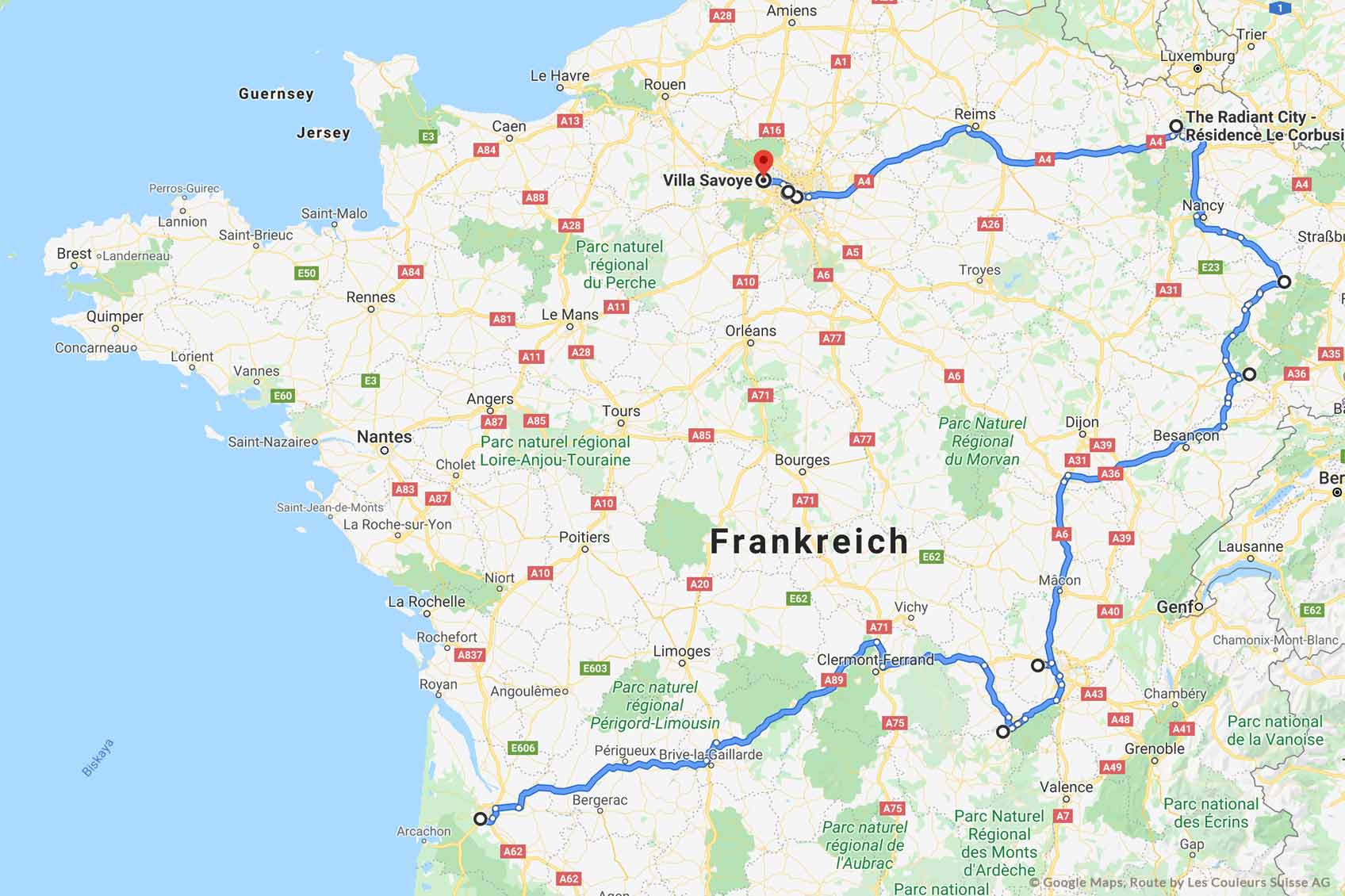
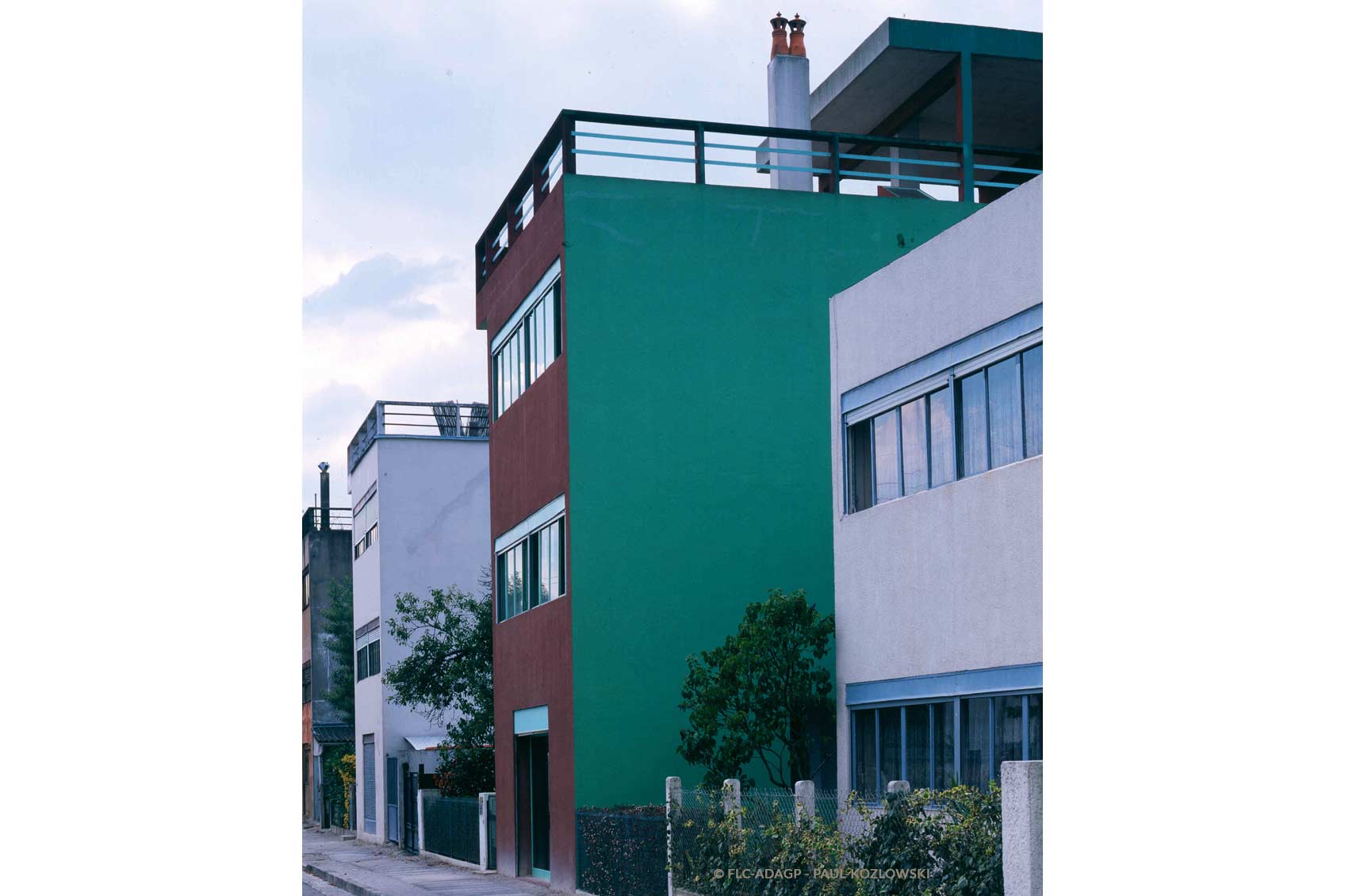
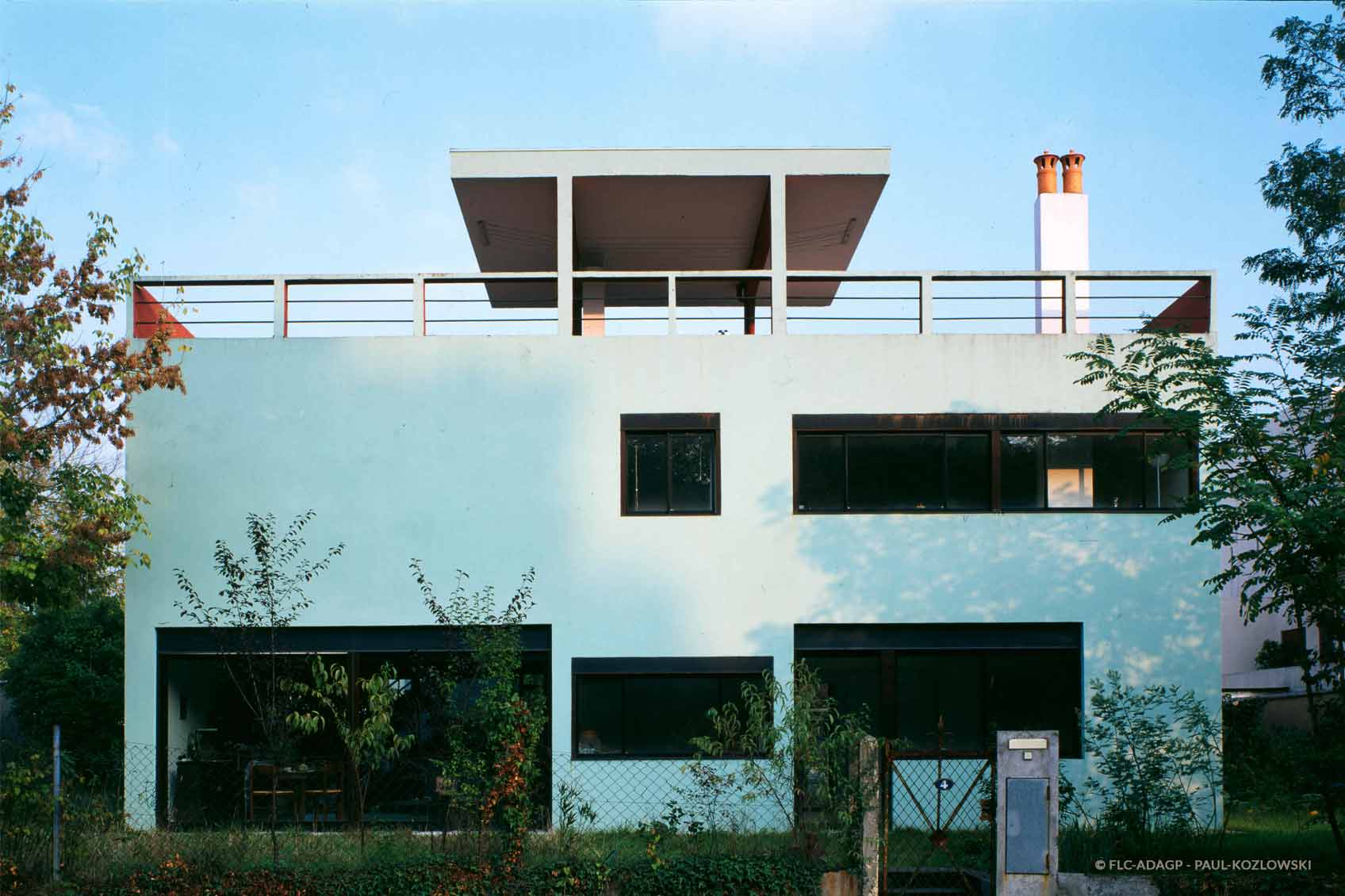
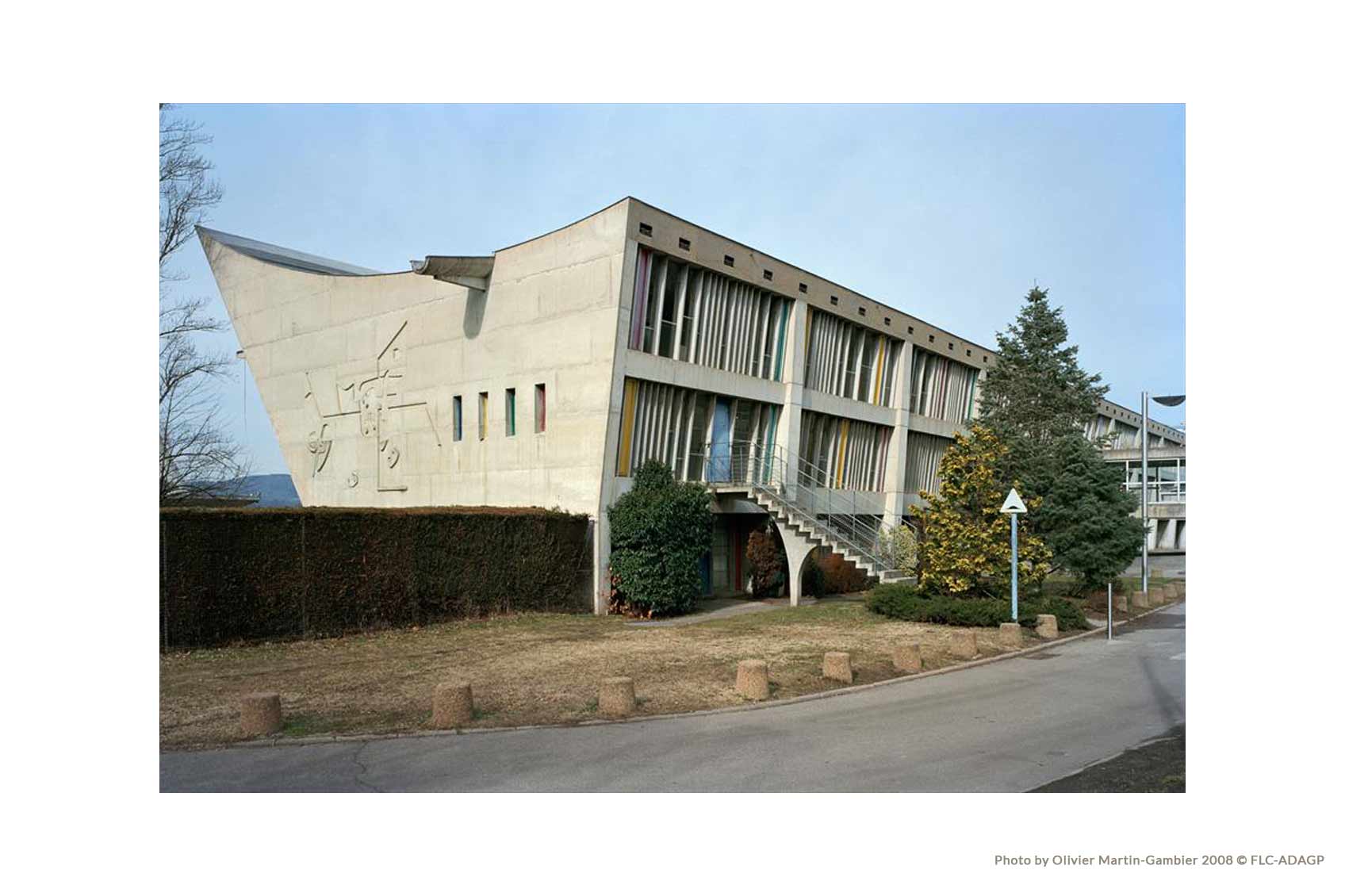
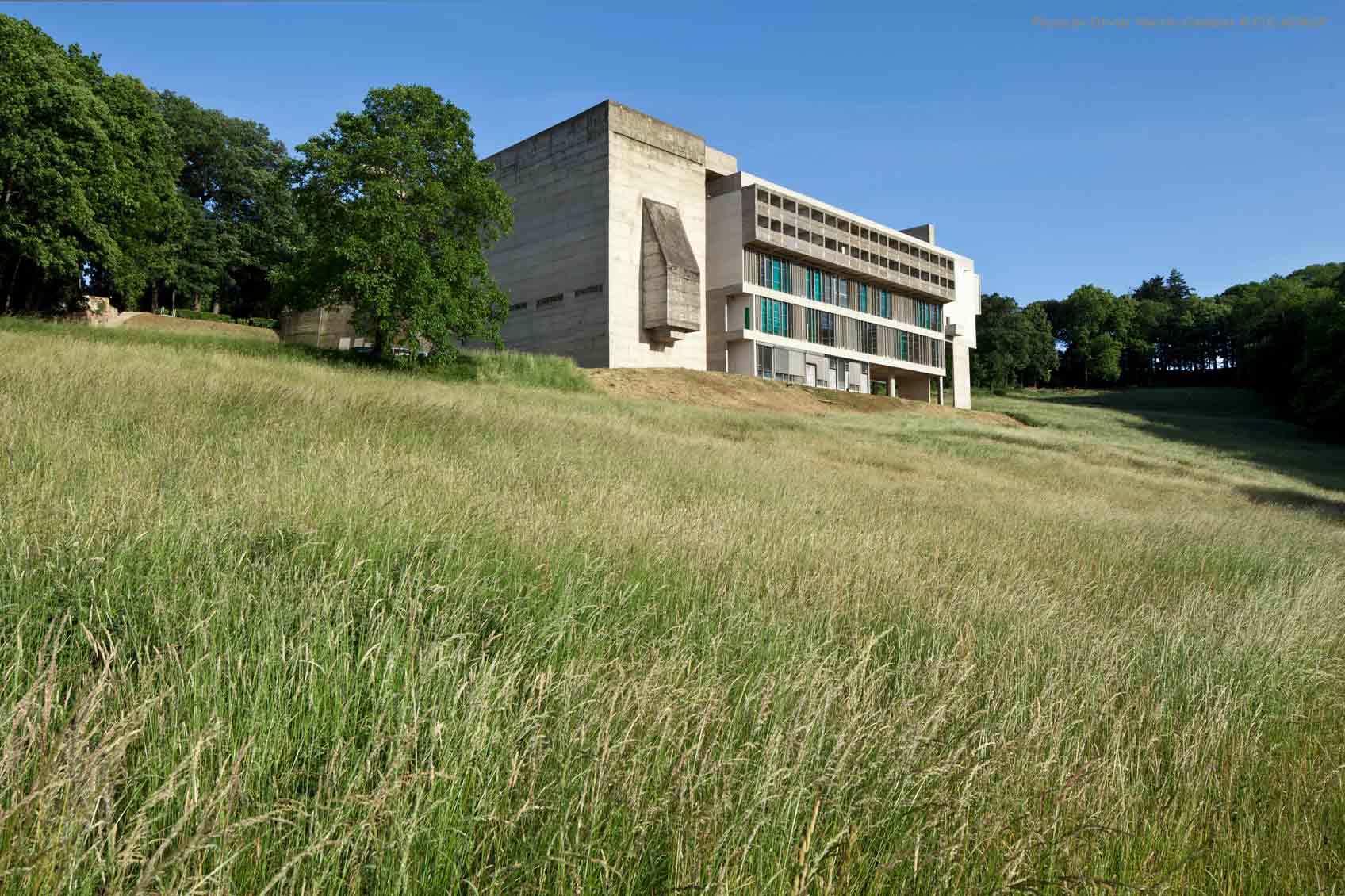
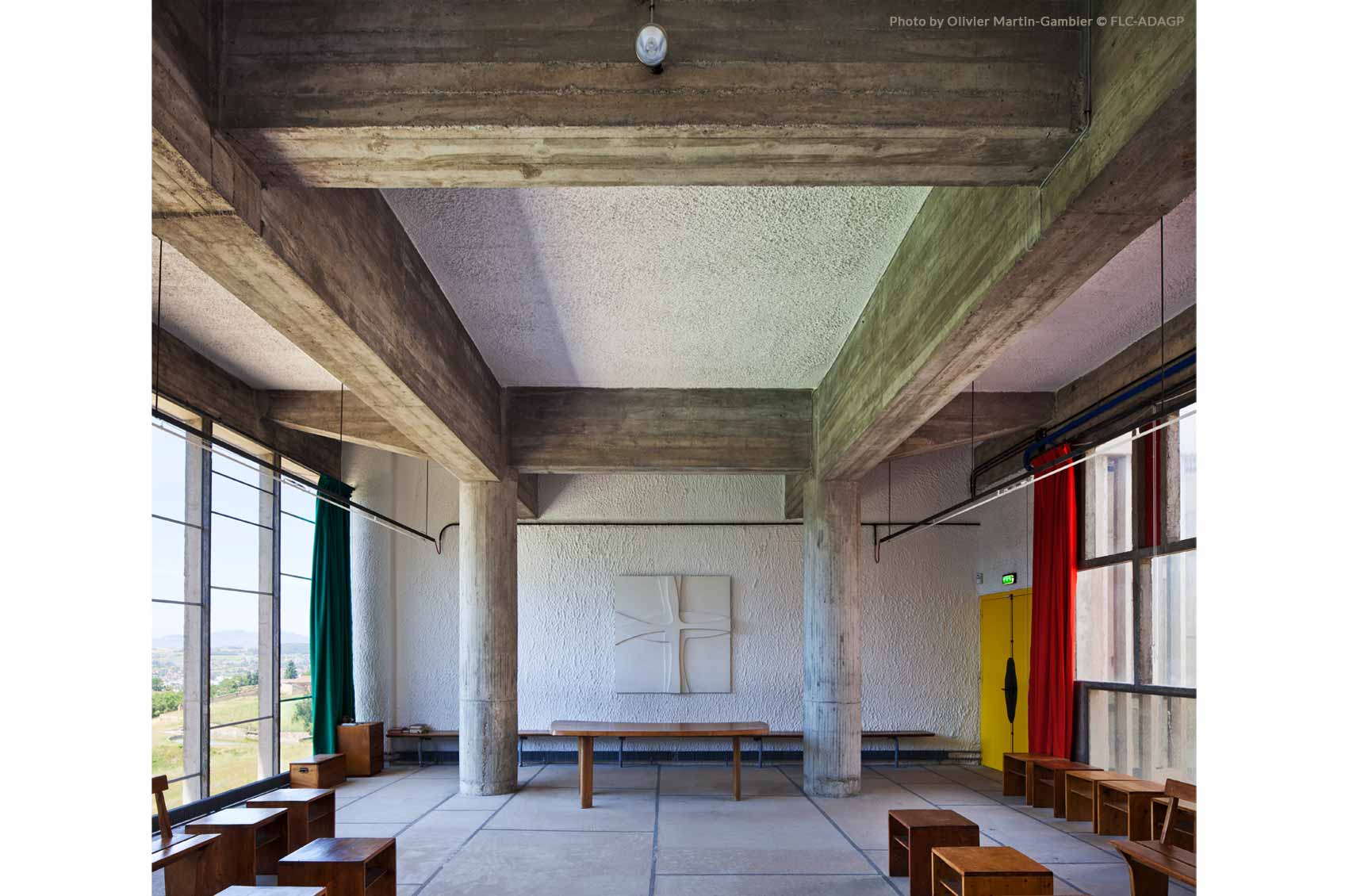
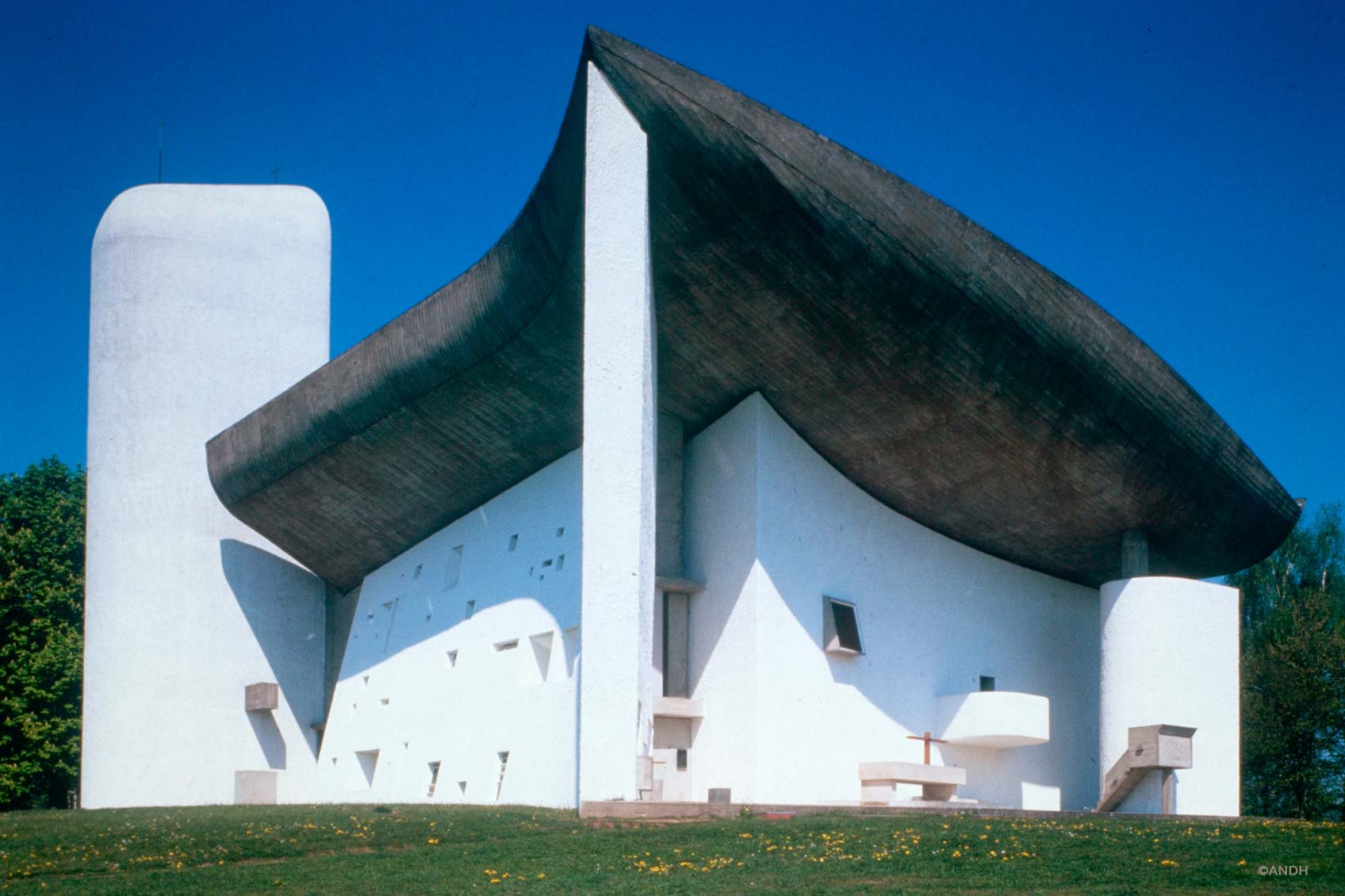
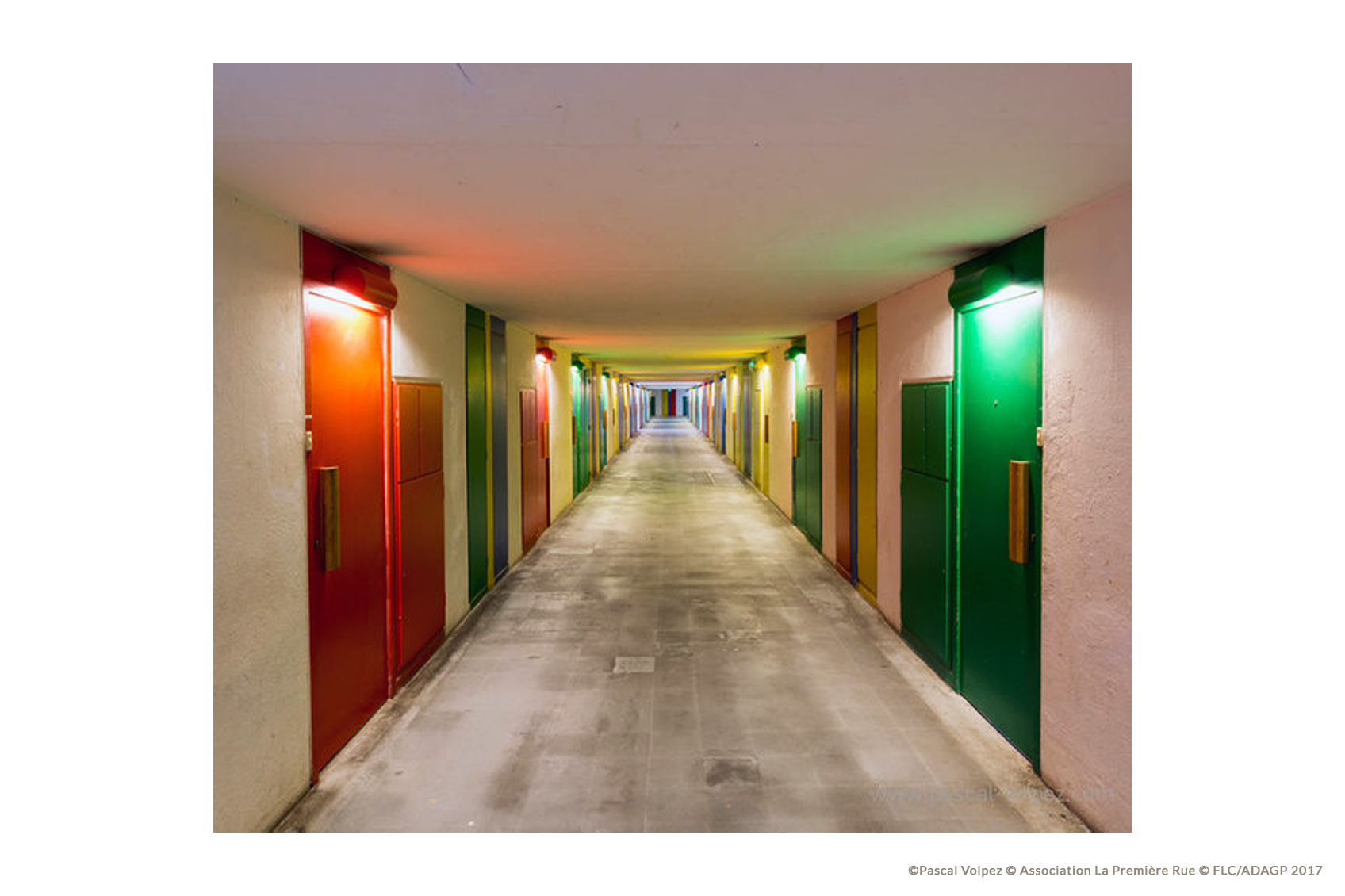
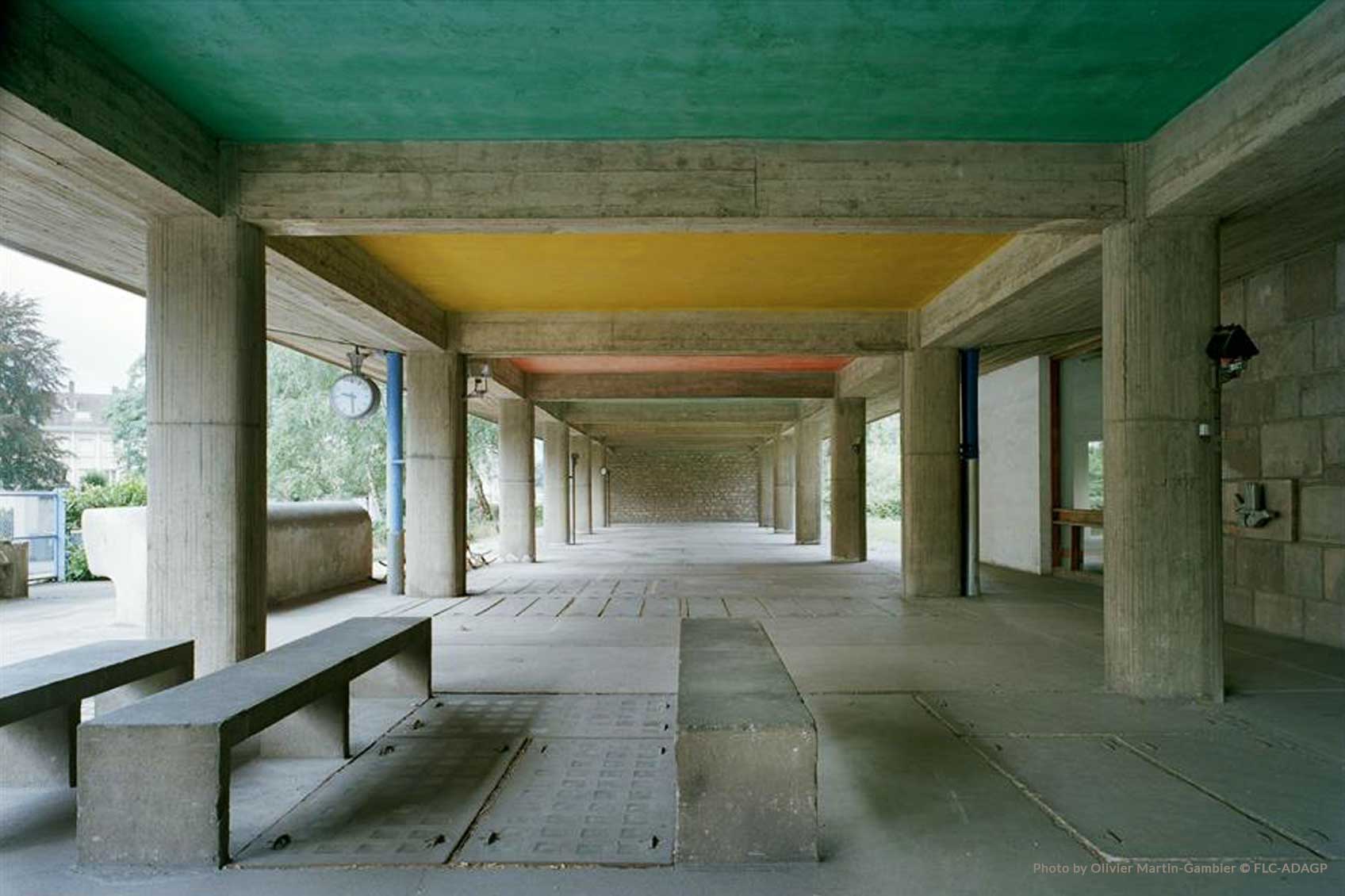
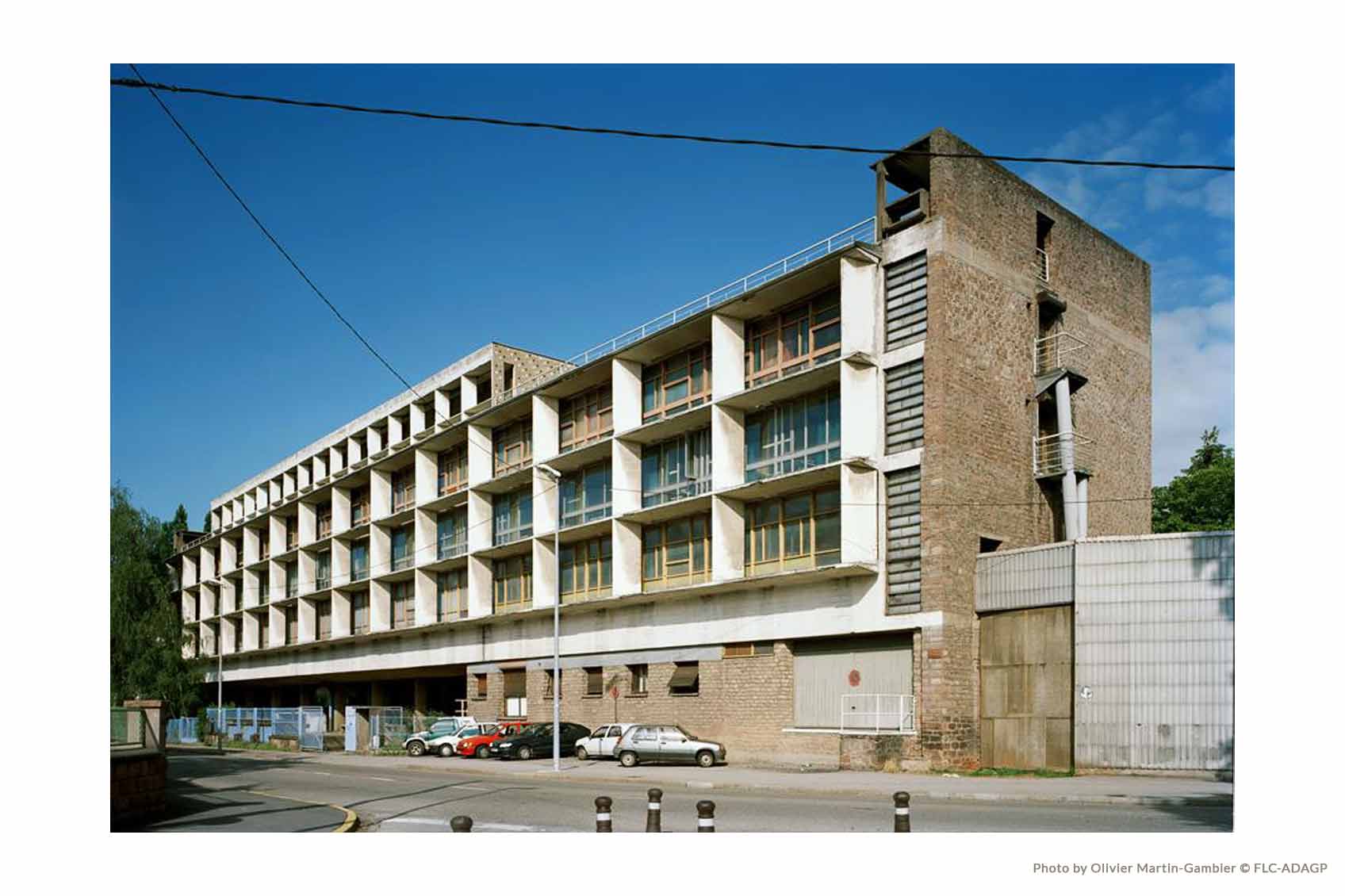
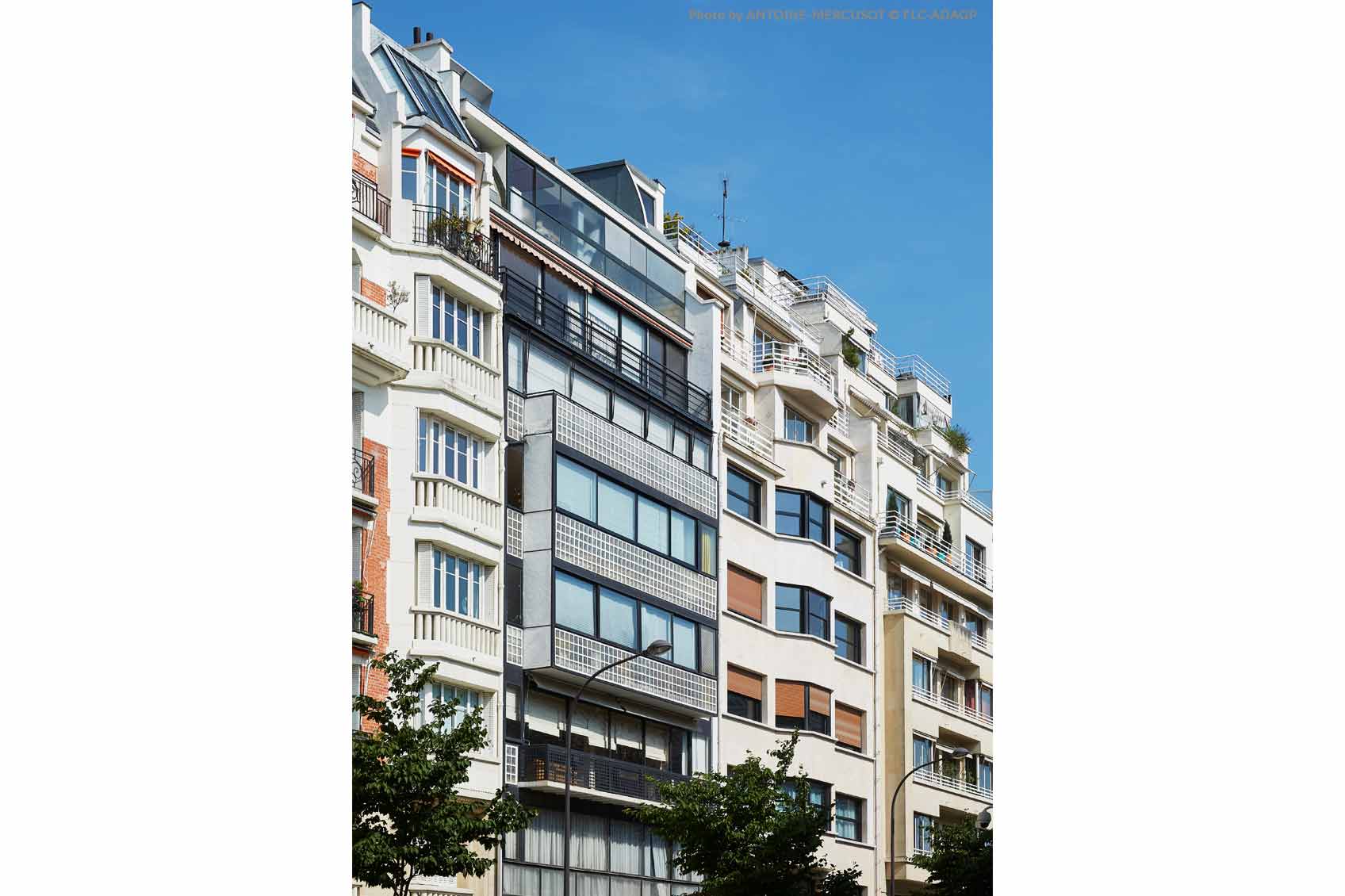
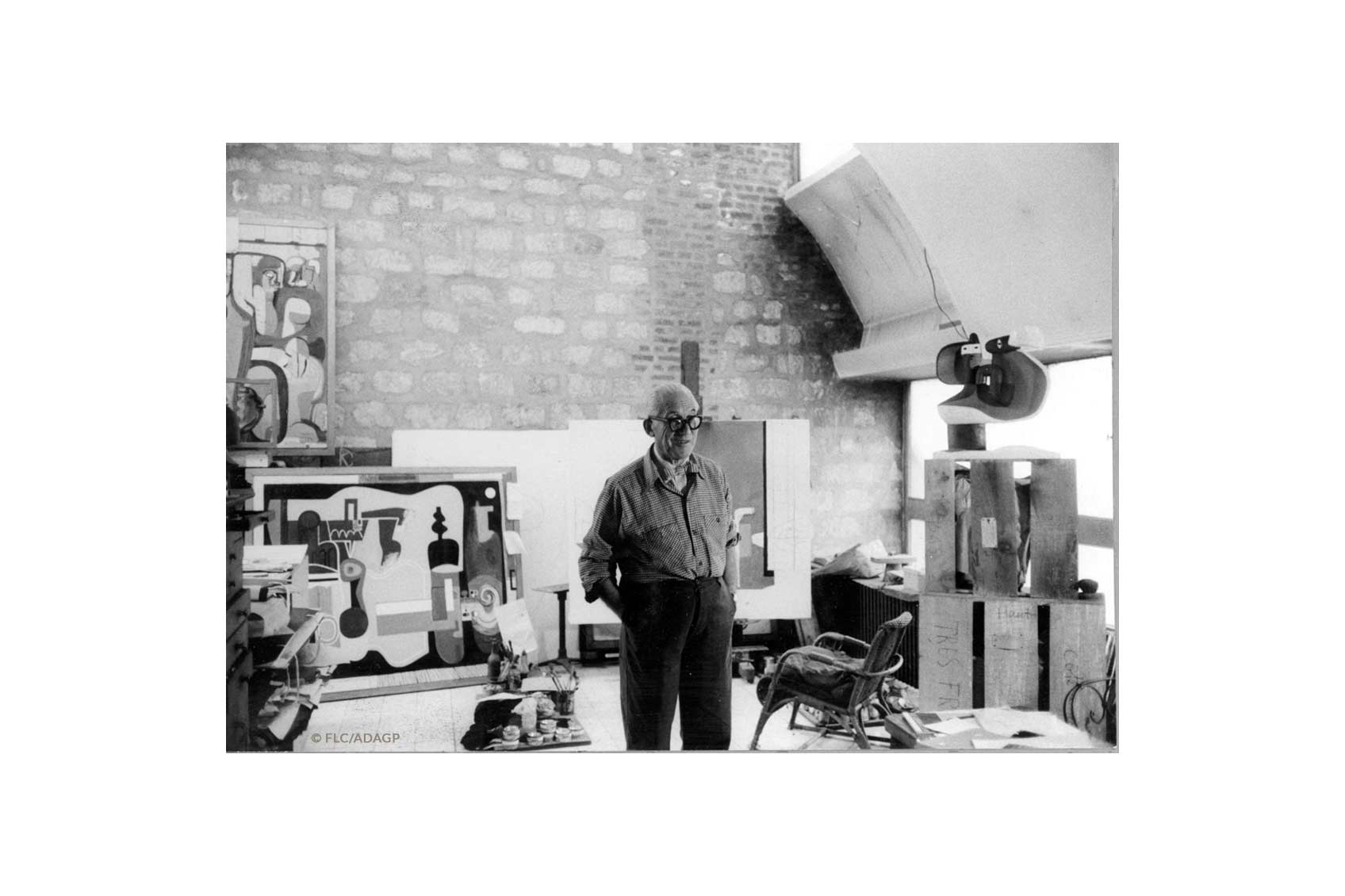
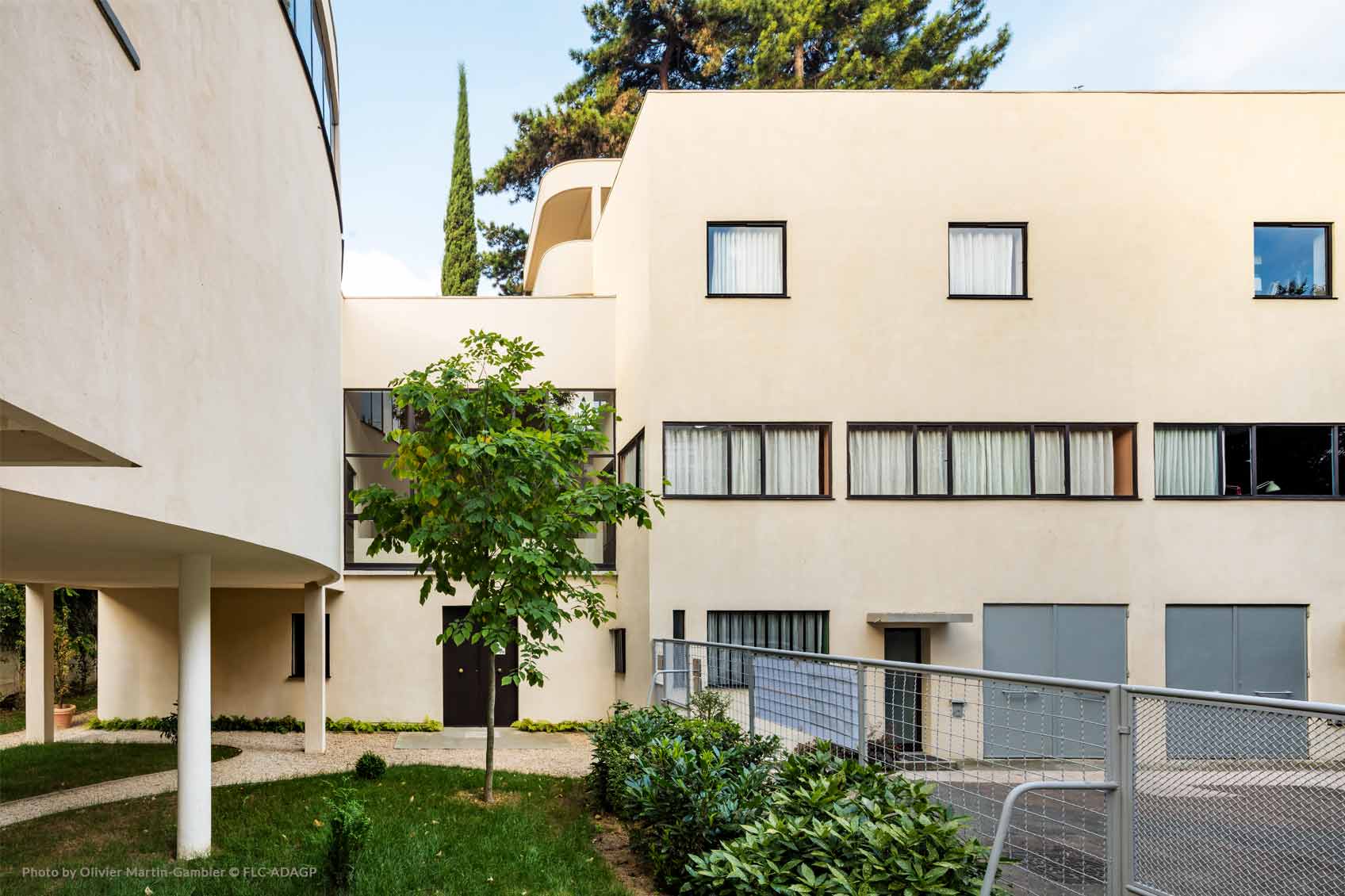
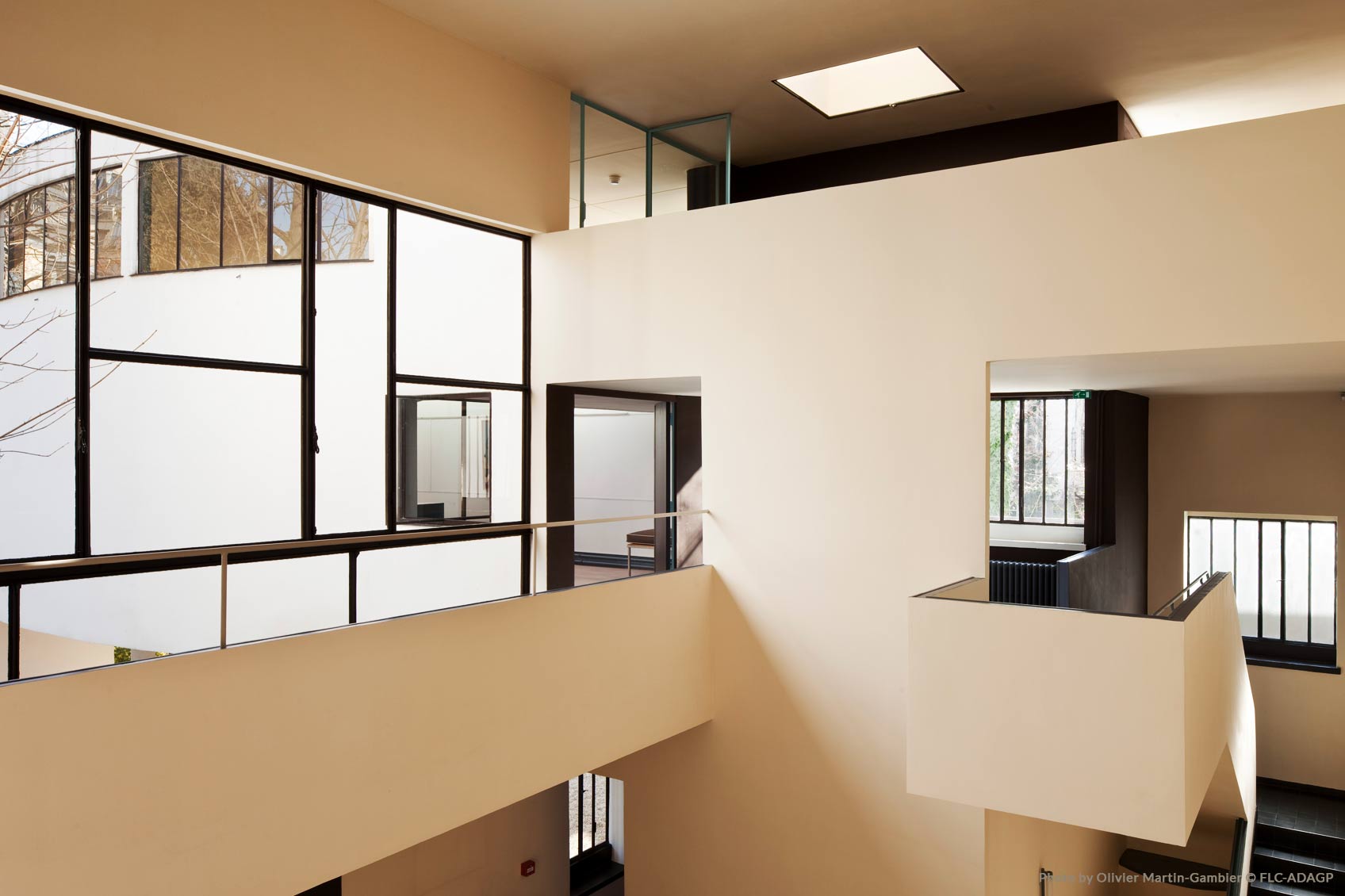
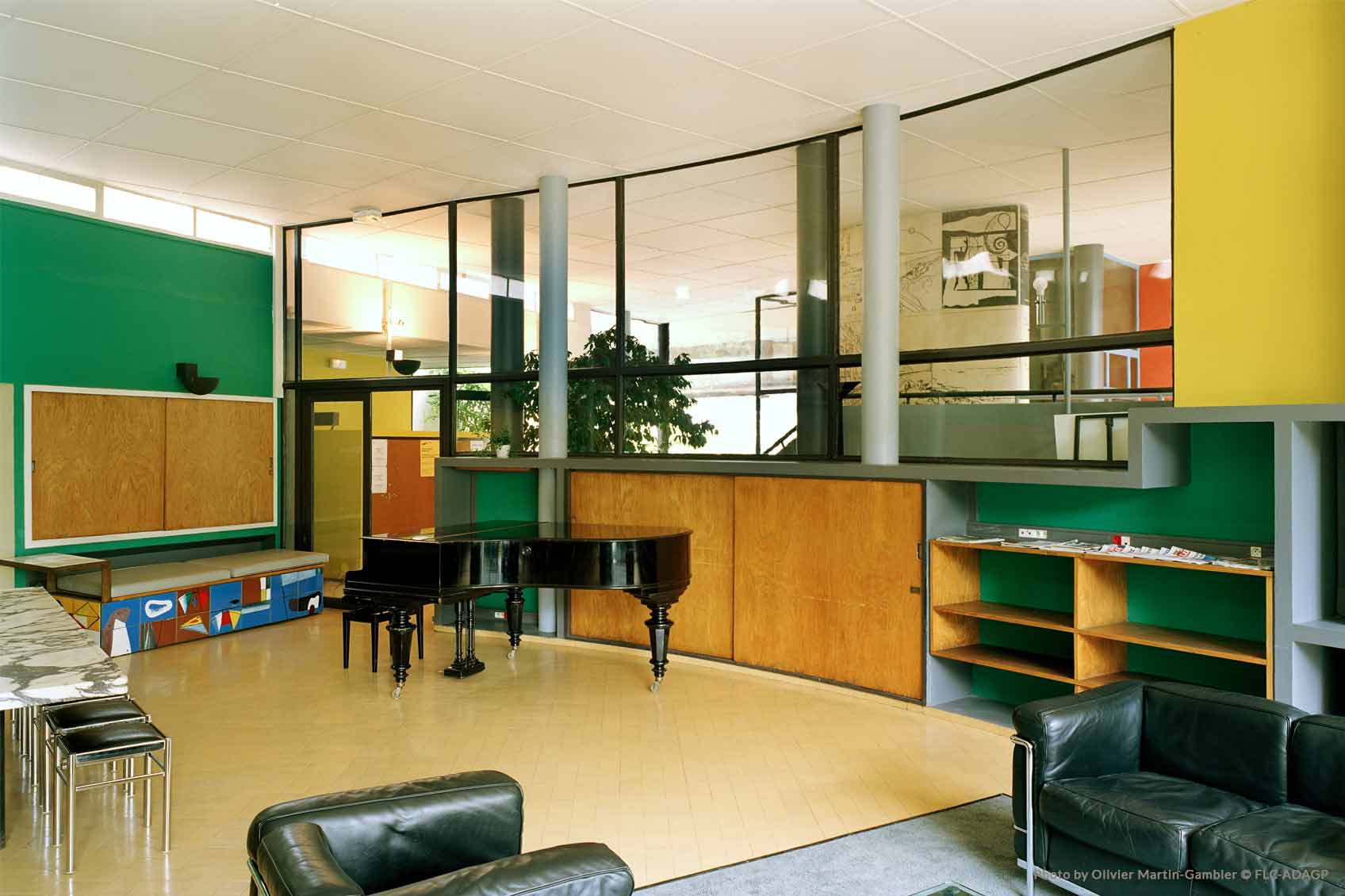
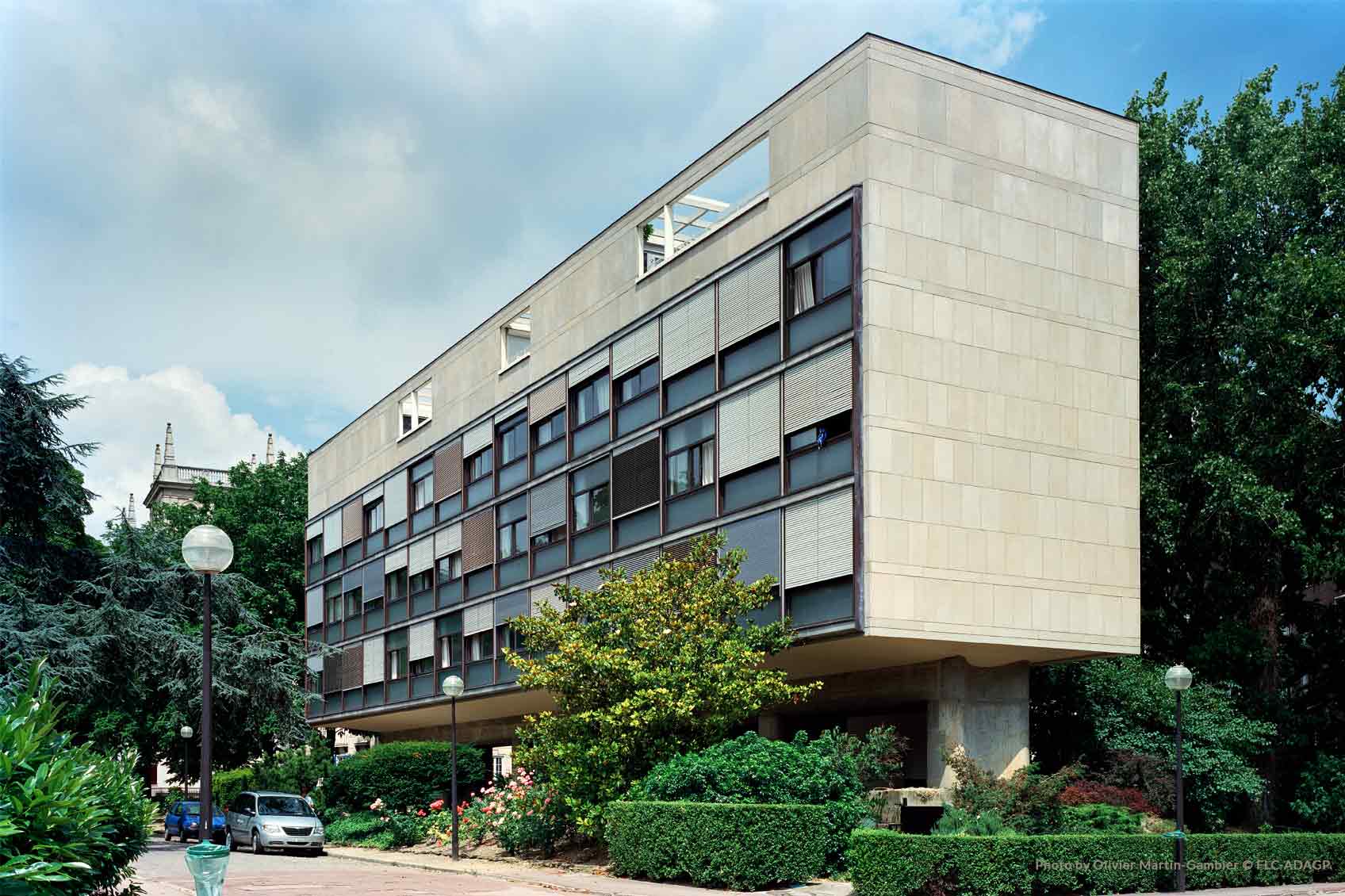
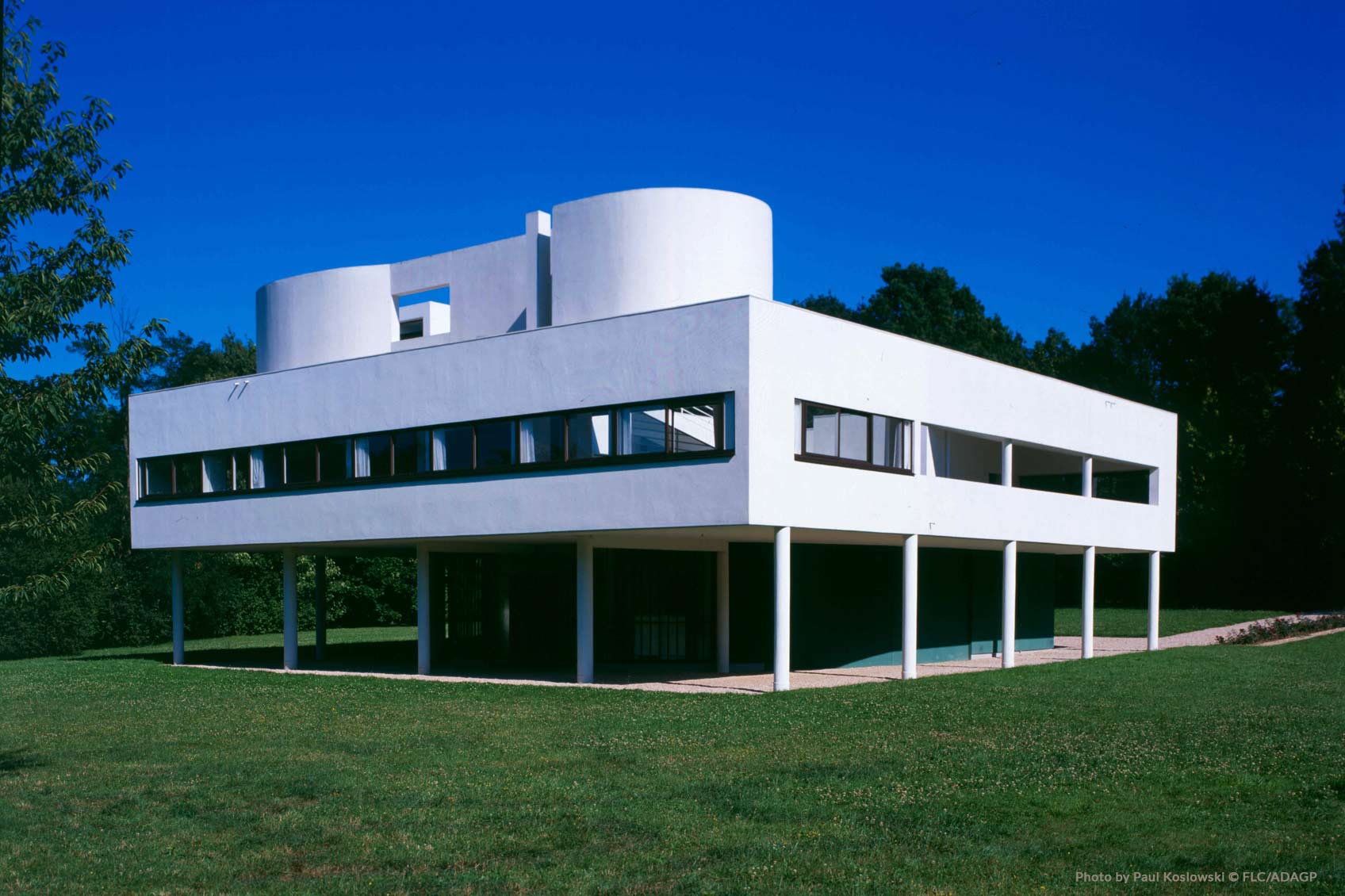
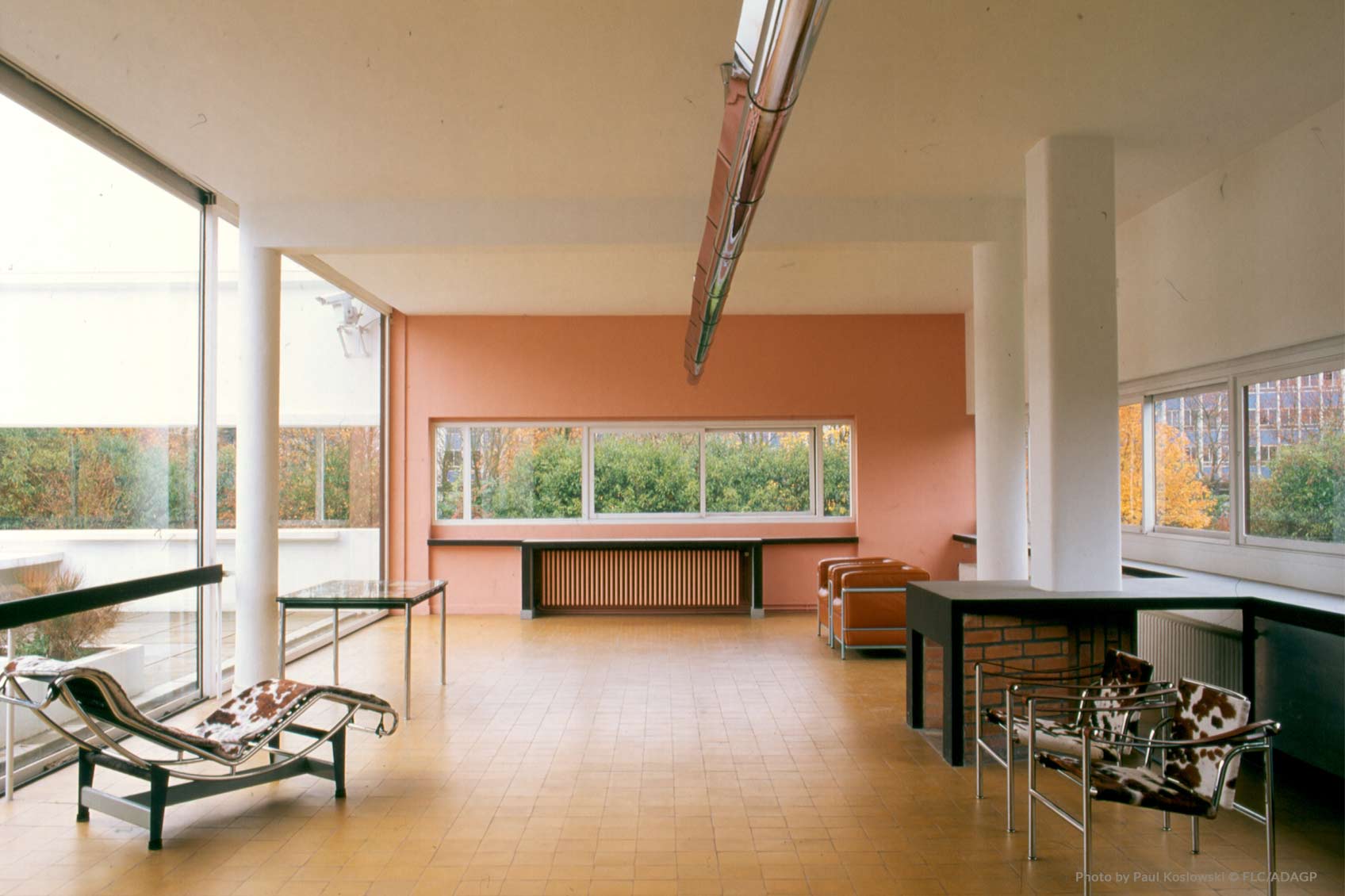
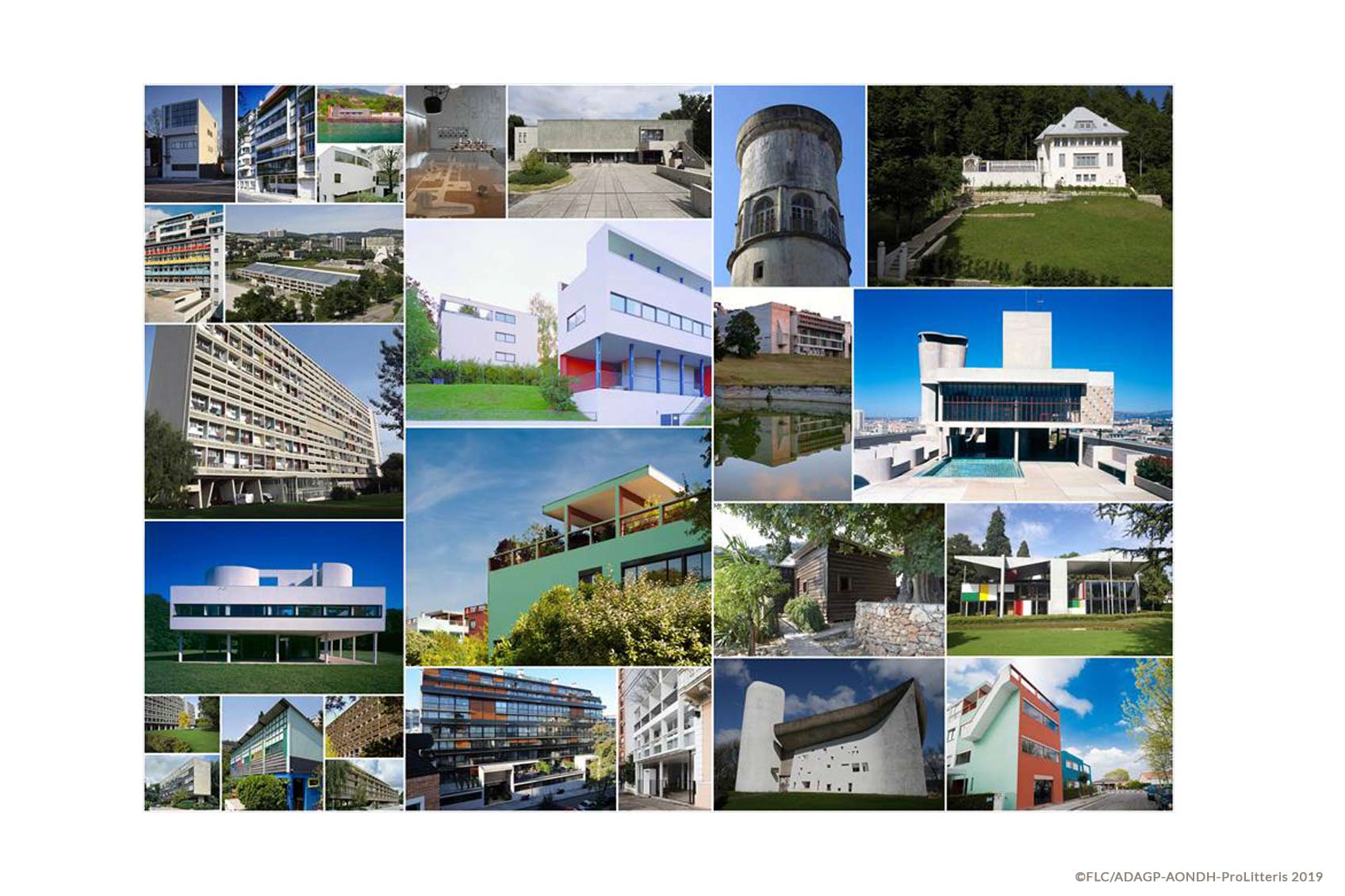
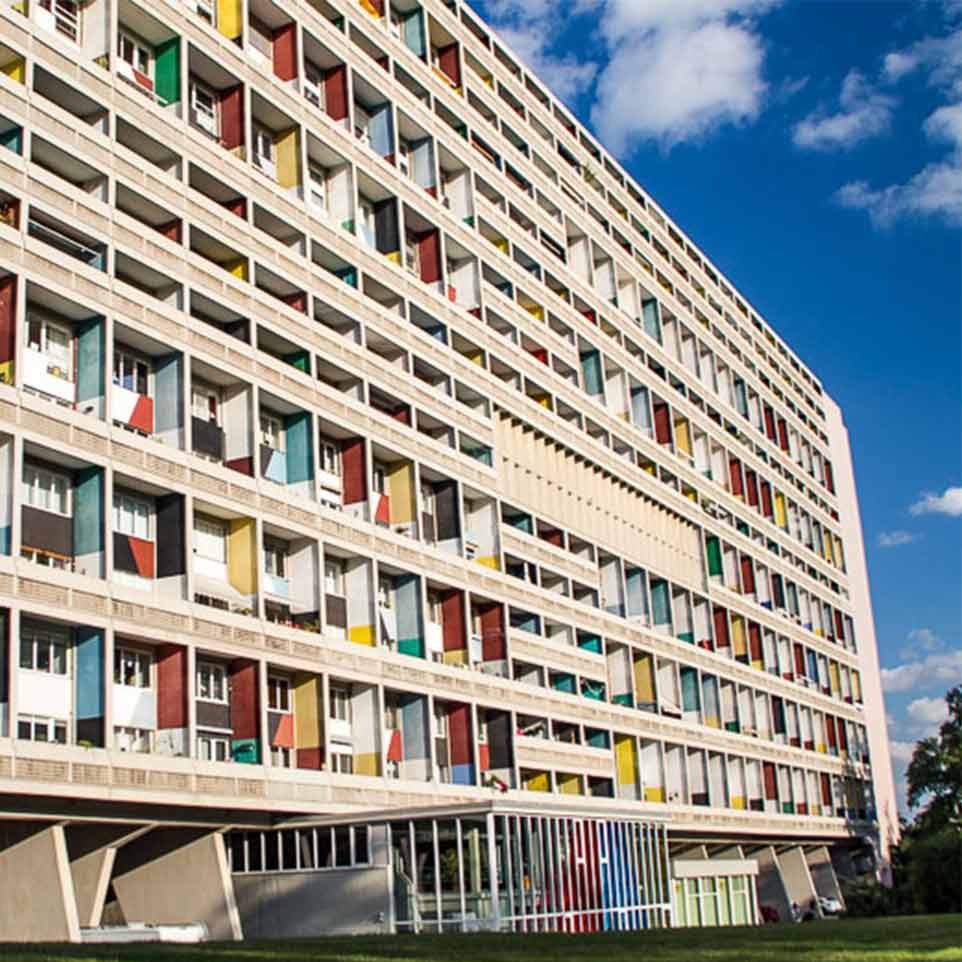
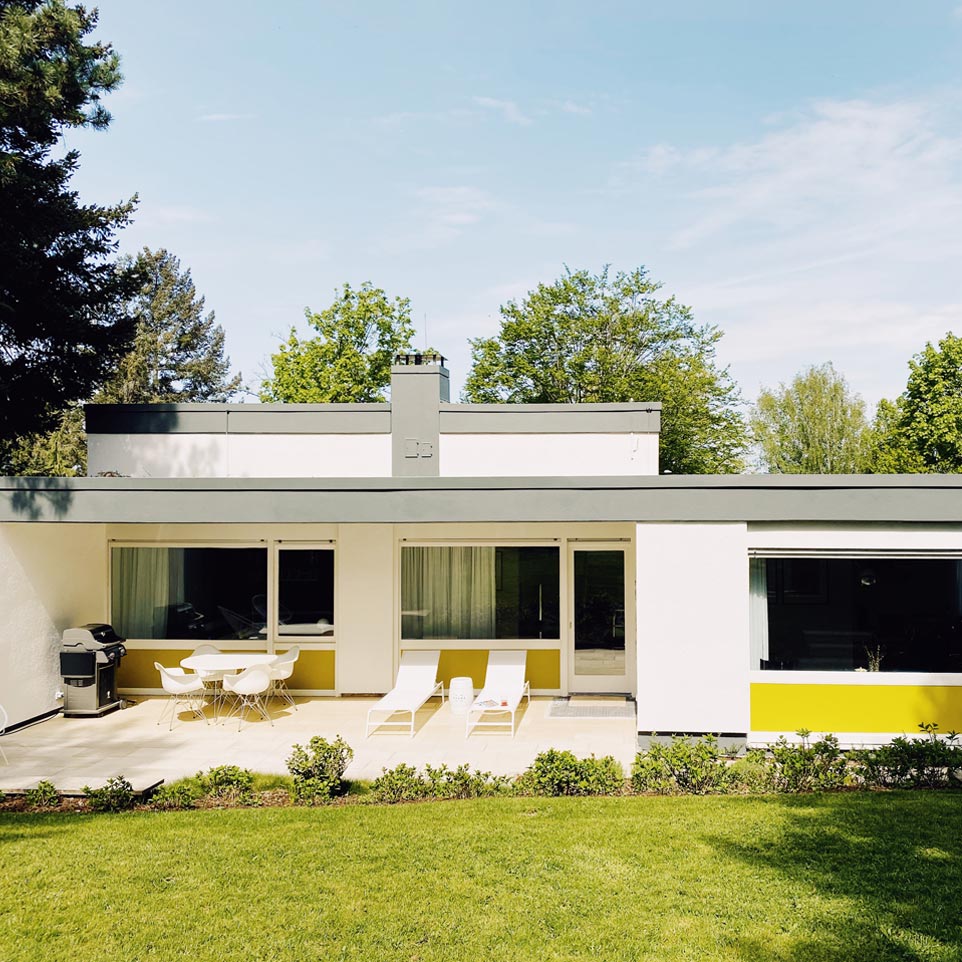
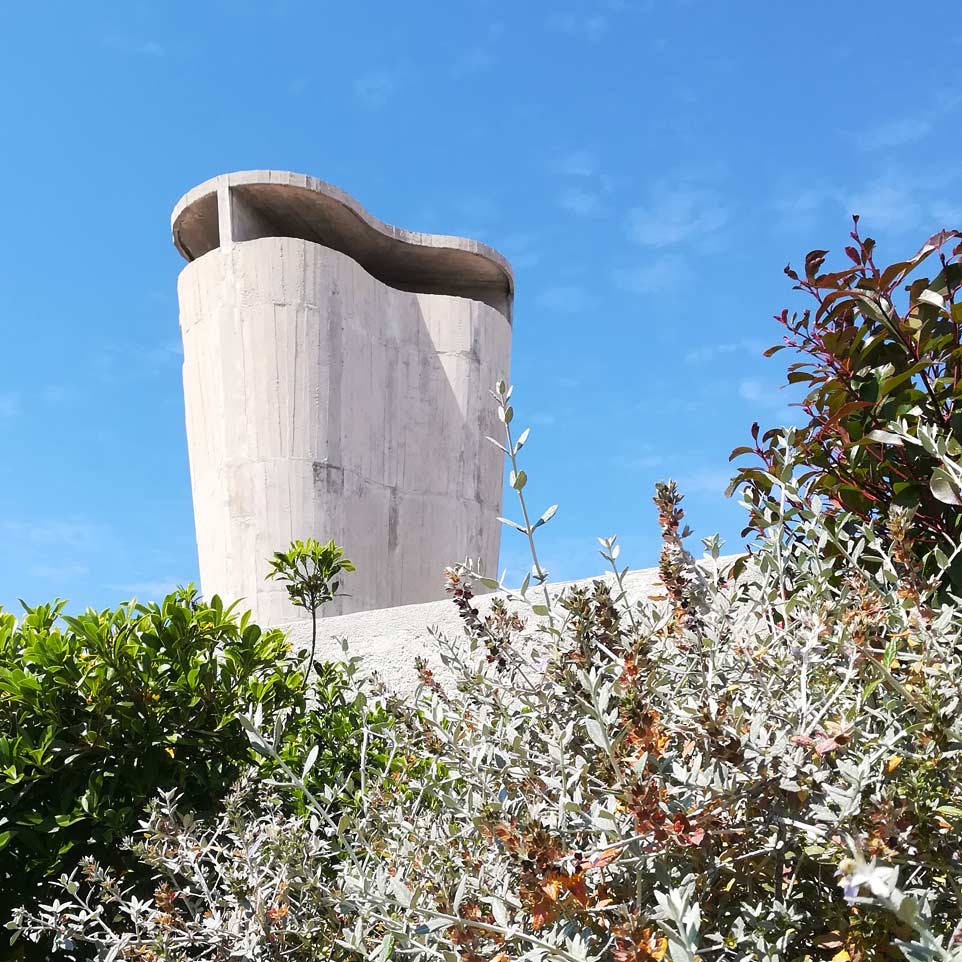
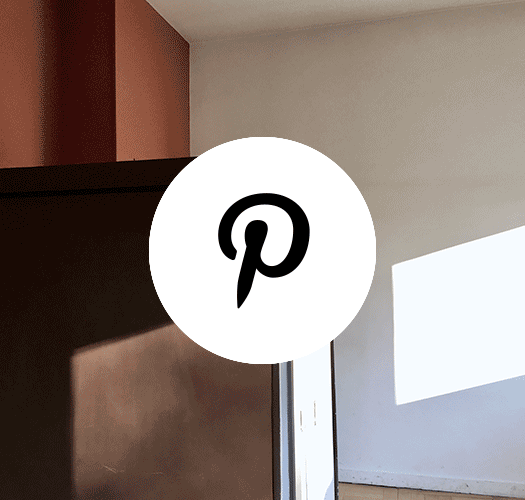




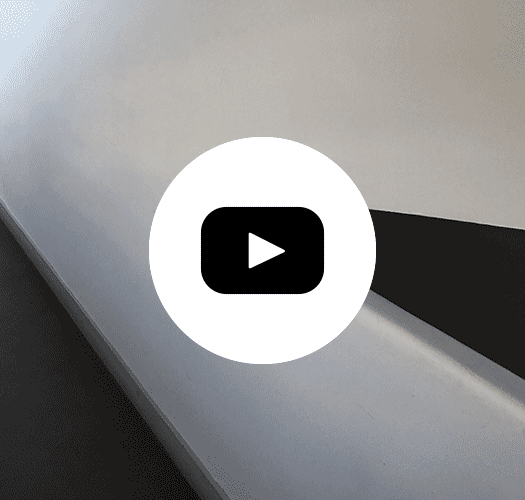

Comments
No Comments